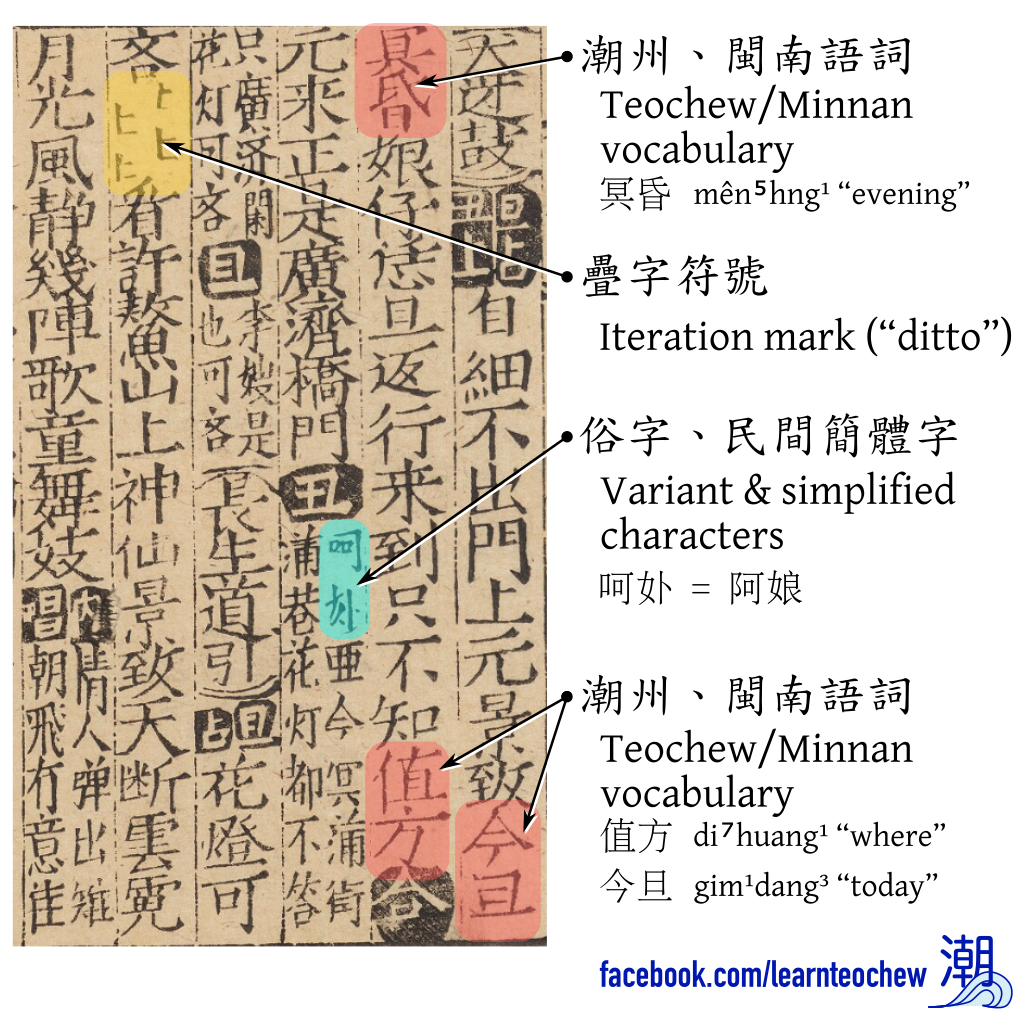How to read historical opera scripts (4)
Teochew is actually one of the earliest examples of a Chinese regional vernacular language in written form, in these opera scripts. This means that they have some unusual characters or words that are not understandable to those who know only Mandarin or Literary Chinese.
This tradition of written Teochew was unfortunately never formalized or used in formal education. These old play scripts, although so valuable to us today, were regarded by literati of the past as low-class and not worth preserving. As a result, all of the existing Teochew texts from the Ming era were either rediscovered in libraries outside of China (in Europe and Japan) or recovered from archaeological excavations.

(Photo: © Bodleian Libraries, University of Oxford, reused under CC-BY-NC 4.0 license)
This page shows some examples of written Teochew/Minnan expressions. Today’s Teochew writers may use different characters to write the same words, sometimes because more research has been done on the so-called “original characters” (本字) of these words, but also because most people today are not familiar with the old conventions. Teochew character writing is also not standardized, although there are informal conventions that are more widely understood than others.
- 冥昏 mên-hng “evening” (more commonly written today as 暝昏、夜昏)
- 值 di “which/where” (question particle, written today as 底、哋)
- 今旦 gim-dang “today” (not commonly used in modern Teochew)
Variant and vernacular simplified characters are also common. Some readers may be surprised to see simplified characters in a centuries-old text, because simplified characters were only introduced as a common standard in the 20th century. Modern simplified characters however were often based on simplified forms used in handwriting, calligraphy, and vernacular texts like these, so some of them have a long history.
Another possible reason for why simplified characters were common is that they require fewer strokes and are easier to carve into wood. Notice how the simplified character 𭑧 is used instead of 娘 in the half-width text column, where the smaller size would make it more difficult to carve the full-form character.
Education of the literati put a lot of emphasis on correct character forms in calligraphy, but these play scripts circulated among a lower social stratum and were therefore not subject to the same cultural restrictions.
If you are interested in discovering more historical Teochew opera texts to see how much you can now understand, do check out our new companion website Learn Teochew with Teochew Opera, where we link to useful resources on Teochew opera including digitized versions of historical editions.
Posted on 2022-01-27 00:00:00 +0000